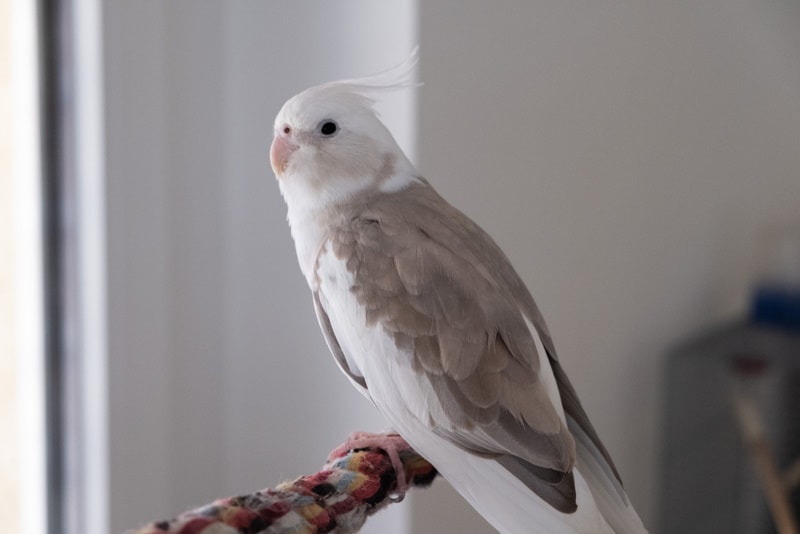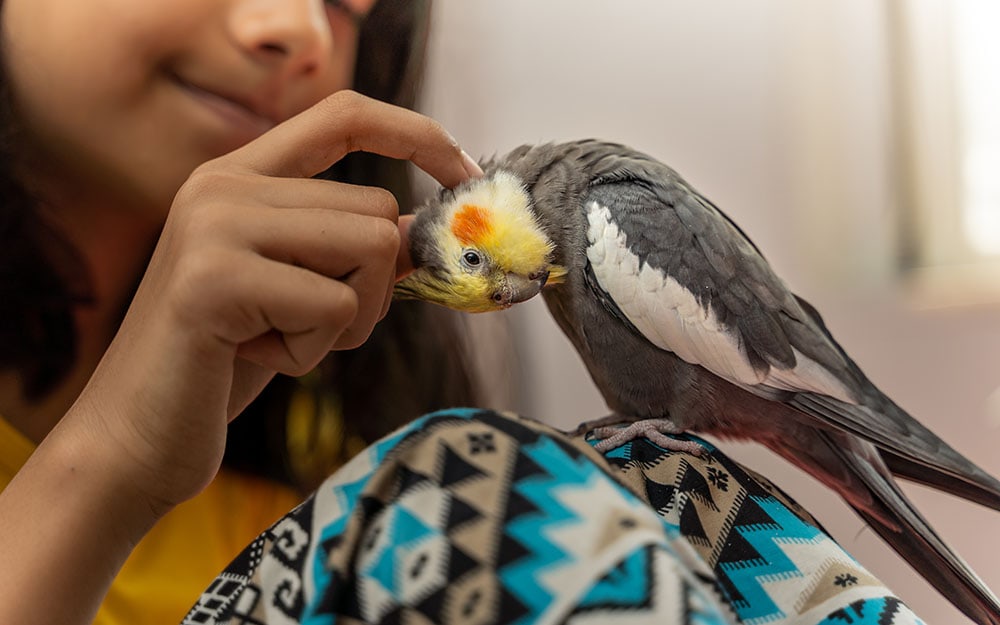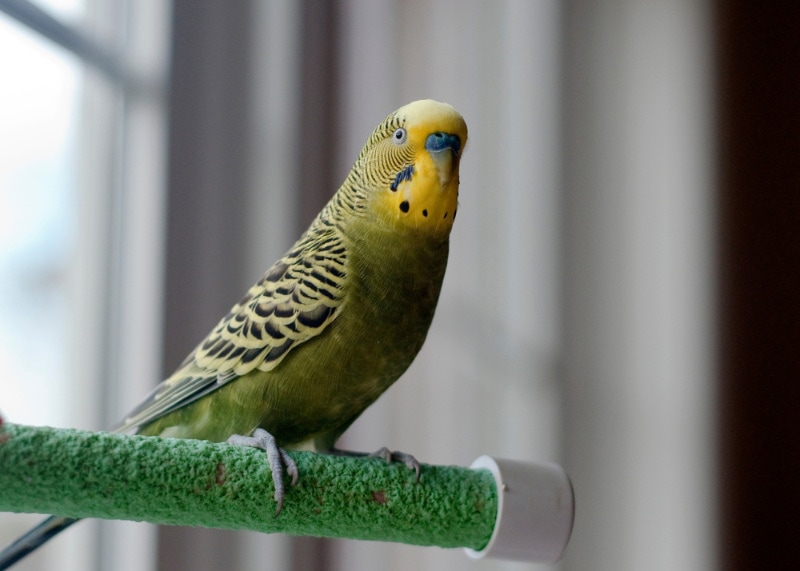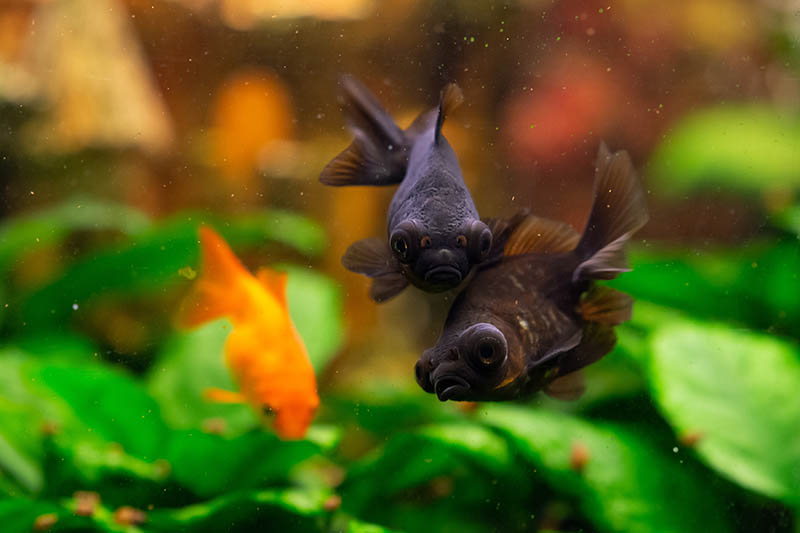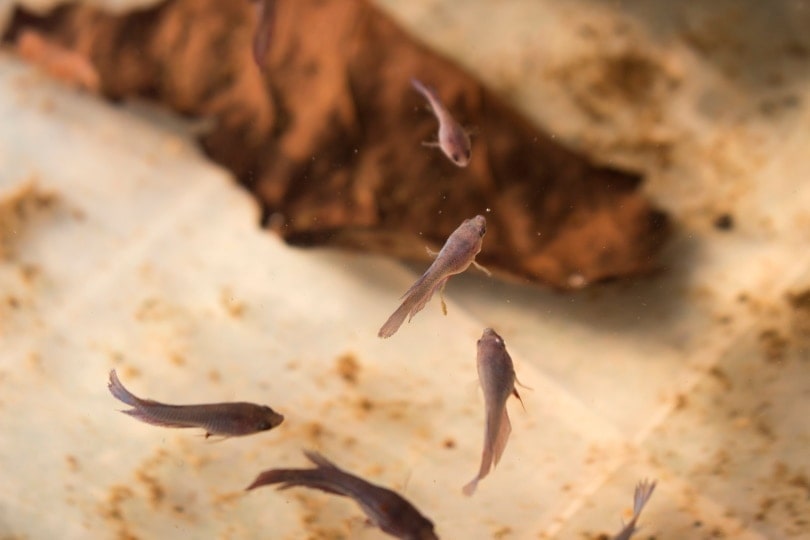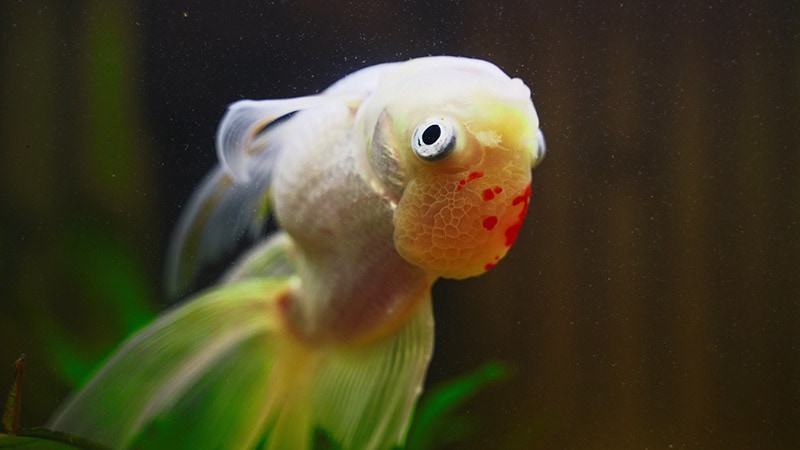English Budgie vs Parakeet: Vet-Reviewed Differences (With Pictures)
By Jordyn Alger
Updated on
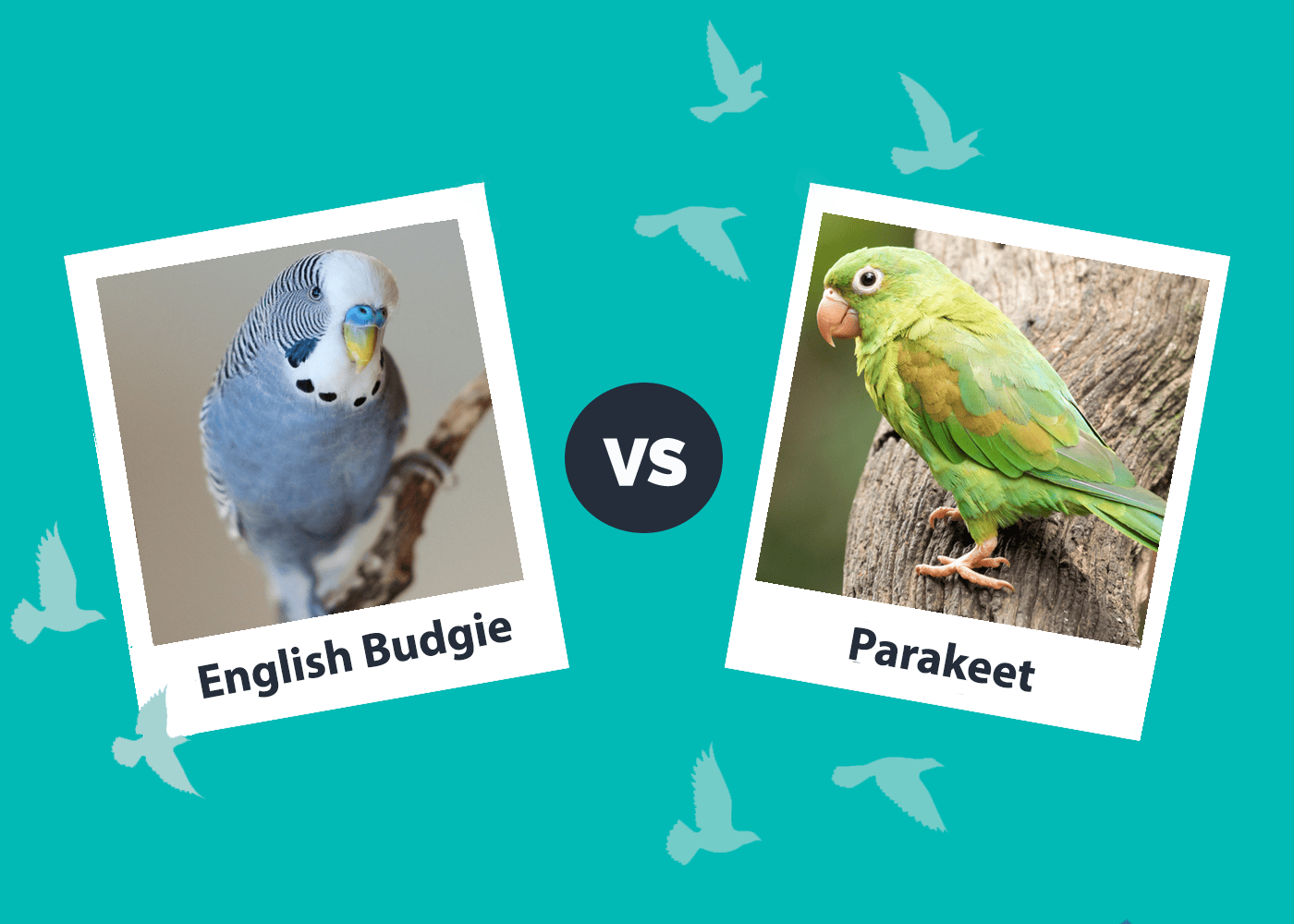
Click to Skip Ahead
Many pet owners adore birds due to their eye-catching plumage and their unique vocalizations, but as any avian enthusiast will tell you, there is so much more to these extraordinary creatures. In this article we will compare the English Budgie and the American Parakeet. In America, the word parakeet is typically used to refer to budgies, although technically budgies are only one species of parakeet. This article will therefore use the term parakeet to describe American budgies.
So while American parakeets and English budgies are actually the same species, budgerigar (Melopsittacus undulatus), their differences lie in their breeding. Below, we’ll discuss each bird’s personality, activity/training needs, and health so you can determine which is right for you.
Visual Differences

At a Glance
- Average height (adult): 10-12 inches
- Average weight (adult): 55-65 grams
- Lifespan: 7-8 years
- Exercise: Daily
- Family-friendly: Yes, but adult supervision is recommended for children
- Trainability: Docile and trainable
- Average height (adult): 7-9 inches
- Average weight (adult): 30-50 grams
- Lifespan: 7-14 years
- Exercise: Daily
- Family-friendly: Often with training and handling. Adult supervision is recommended for children
- Trainability: Intelligent and capable of learning tricks
English Budgie Overview
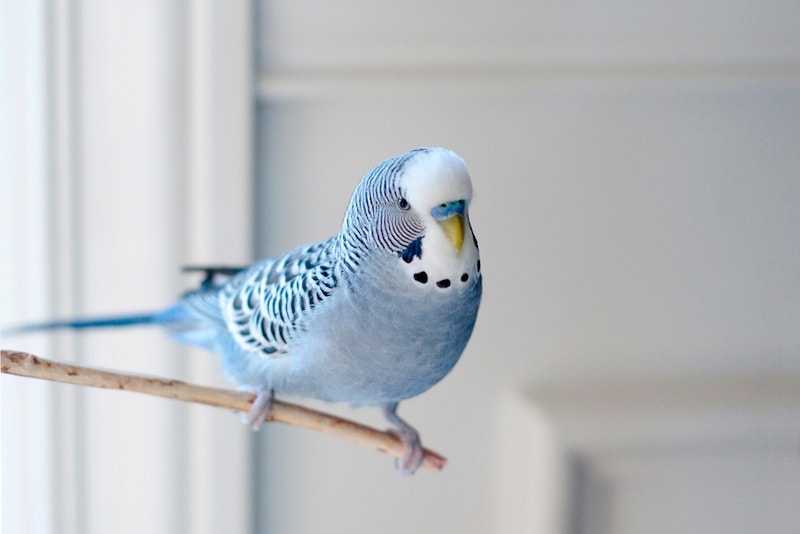
Personality / Character
The English budgie, also known as the Show budgie, has been selectively bred for years. This has resulted in a larger bird, often with more defined color markings.
They tend to be more docile and laid back than American parakeets, and are usually easy to train and tame. They are calm yet highly entertaining companions.
Although not particularly noisy birds, they won’t hesitate to repeat words or phrases that they pick up. They also like to chirp, whistle, and make chattering sounds. Many families find that the English budgie is an excellent pet, their charming demeanor and relaxed personalities make them great additions.
Still, it is recommended that adults supervise all interactions between children and the English budgie. These are still small delicate birds that will be easily stressed by improper handling.
Exercise
English budgies need enough room to spread and flap their wings, and providing time outside their cage every day is vital. When taking your English Budgie outside of their cage, carefully supervise them.
Inside the cage, you can install perches for your English budgie. Likewise, you should offer a variety of toys to your pet for exercise and enrichment. To keep them entertained, rotate the toys weekly, replacing one toy at a time to prevent your English Budgie from becoming stressed over the sudden change.
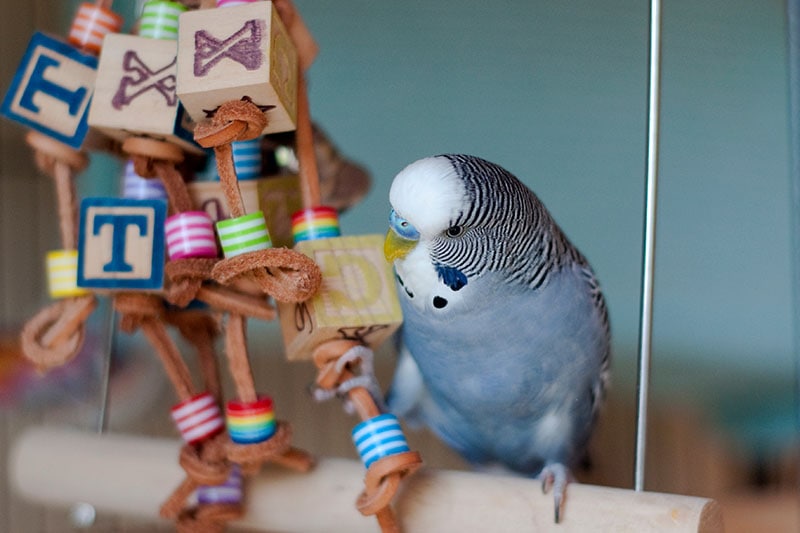
Training
As mentioned, the English budgie is a highly adaptable bird. This makes them fairly easy to train. English budgies are motivated by food, and providing treats for correct behavior is a great way to keep them engaged in the training process. However, you must monitor how much you feed your English budgie to avoid obesity. Treats should make up no more than 10% of your bird’s diet, so only offer them sparingly.
Health & Care
Annual examinations by a trusted avian veterinarian are essential to maintaining your English budgie’s health. While examining your pet, a veterinarian may examine the condition of their body, the color of their feathers, and the contents of their fecal matter.
Signs of a healthy English budgie include bright feathers, clear eyes, and smooth skin. If your English Budgie isn’t feeling well, you may notice watery or discolored droppings, discolored feathers, sneezing, tail bobbing, weakness, or poor balance. If you notice any of these signs or have any other concerns, reach out to your vet right away for an examination.
A balanced diet is important to keep them healthy. A high quality pellet diet should make up 60-70% of their overall diet, with seeds only forming a small addition alongside fruits and vegetables. The English budgie is known to have a shorter lifespan than American parakeets, but with proper diet and care they may live for similar lengths of time.

Suitable For:
English budgies are great pets for beginners and experienced bird owners. Their friendly personalities and quieter nature makes them excellent candidates for families. They are social birds and need companionship, either with other birds of the same species or people. English budgies living on their own will require plenty of daily love and attention from you to meet their socialization needs.
Parakeet Overview

Personality / Character
The American parakeet is smaller than the English budgie, having not undergone selective breeding for such a long period of time, they are closer to wild budgies.
Parakeets are generally less easy going and more likely to nip than the English variety. They can require a little more time and dedication to training. They are also more active and louder than English budgies.
Adults should supervise all interactions between parakeets and children. While friendly when tamed, they can be occasionally nippy. This is especially true if they feel threatened, which can happen if children improperly handle them.
Exercise
Parakeets are active birds that need to spend time outside of their enclosures each day. They should be given ample time to stretch their wings and fly around. While inside their enclosure, parakeets should have access to perches and toys that will keep them active and enriched throughout the day.
Ropes, swings, ladders, and food-foraging toys are great options for keeping your parakeet entertained. As with the English budgie, it is recommended that you gradually rotate the parakeet’s toys every week.

Training
With their more spirited personalities, the American parakeet can take a bit more time and patience to train and get used to handling. However they are intelligent and playful and do take well to training. They can be very good at mimicking words, sounds and even phrases.
Health & Care
Visiting your trusted veterinarian each year is the best way to help your parakeet maintain good health. Contact your vet straight away if you notice any signs of ill health. American parakeets do tend to be healthier birds with a longer life expectancy than English budgies.
Their diet should be the same as that described for English budgies.
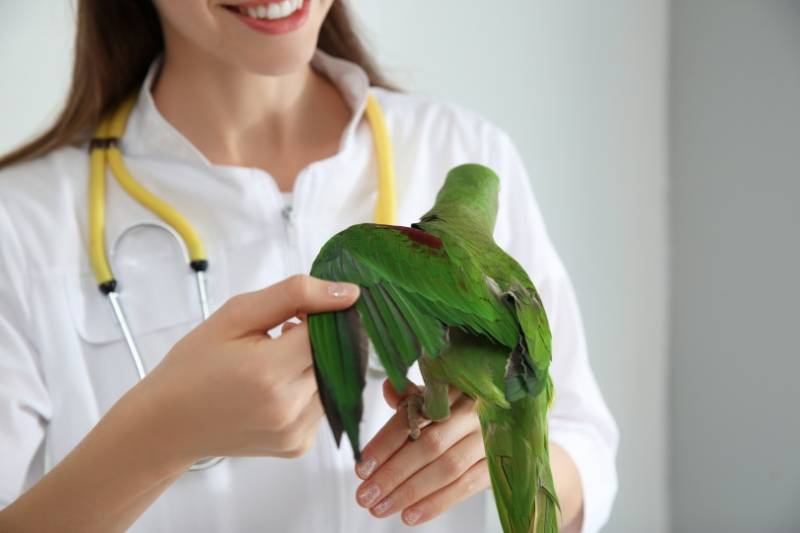
Suitable For:
Parakeets are also great pets due to their social nature and engaging personalities. They are more active and vocal than English budgies, and can take more time and patience to train and tame. American parakeets are happier in pairs unless they have a lot of human companionship.
Which Is Right for You?
It can be surprising that two birds from the same species can have so many differences in appearance and personality traits!
Both the English budgie and American parakeet can make excellent companions, depending on how you tame and train them. There are, however, some important factors to take into consideration when choosing which is right for you.
American parakeets generally require more training, as they haven’t been selectively bred for so long they retain more wild instincts and can be more skittish. English budgies take to training more quickly and are calmer birds. Both English budgies and parakeets are great mimics but the American parakeet tends to be louder and more vocal. Unfortunately health wise, the English budgie has been frequently inbred to maintain character traits and appearance, and this can mean they are more prone to health conditions and a shorter life span.
See also:
- Do Poodles Shed? Vet-Approved Care Facts & Tips
- Can Parrots Eat Eggplant? Vet-Reviewed Health Concerns
Featured Image Credit: Left: English Budgie(UniqSnaps, Shutterstock) , Right: Parakeet (Rob Jansen, Shutterstock)


